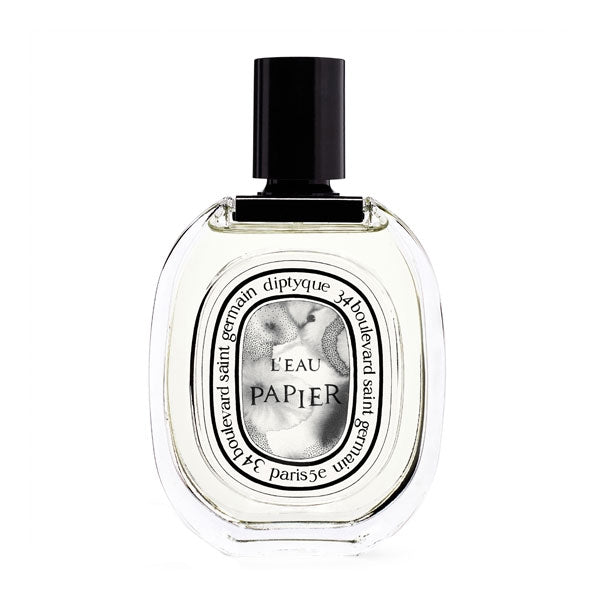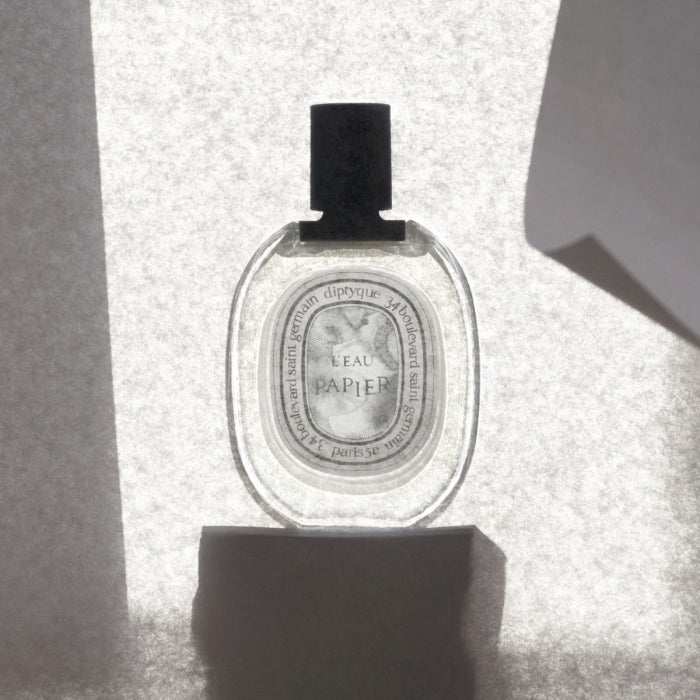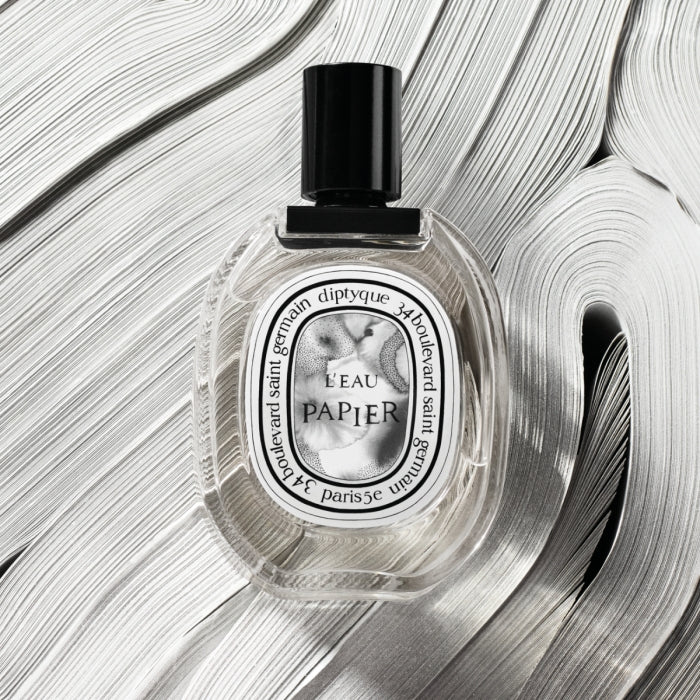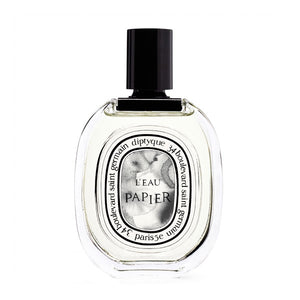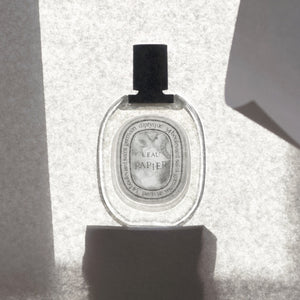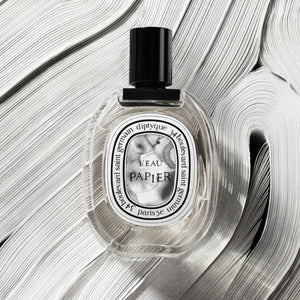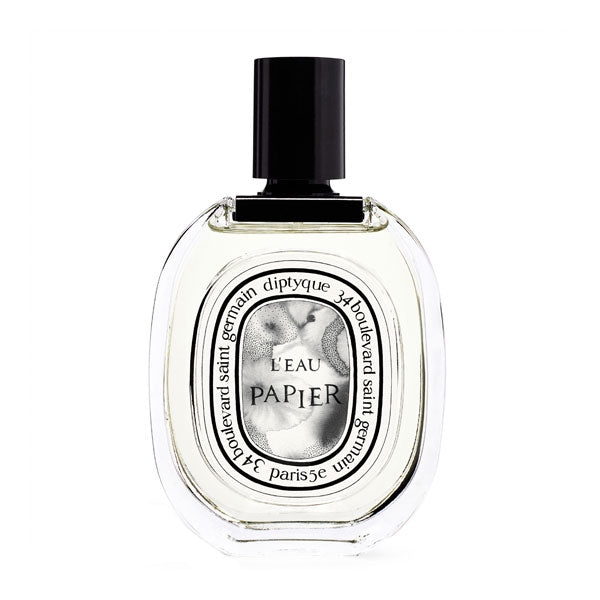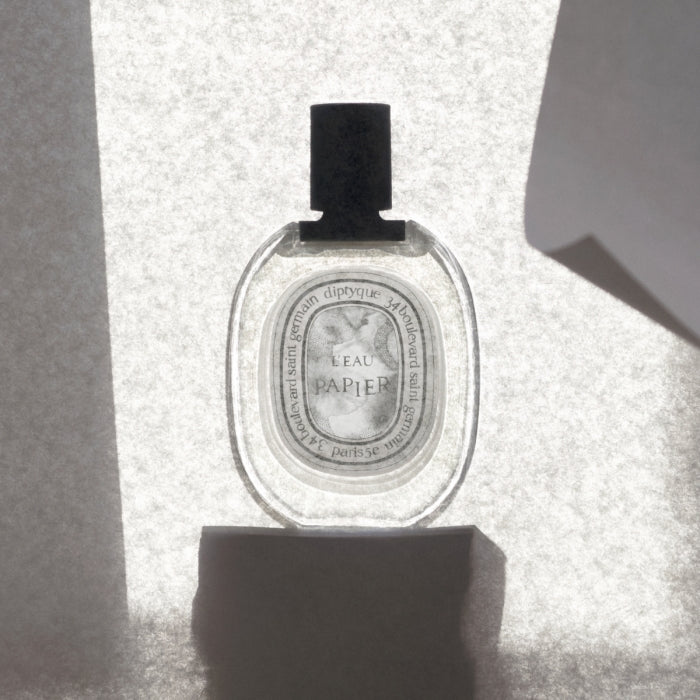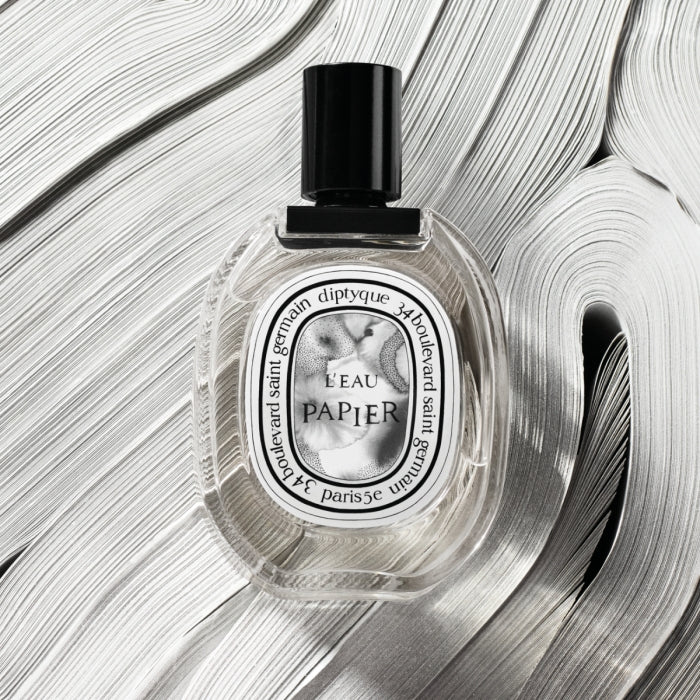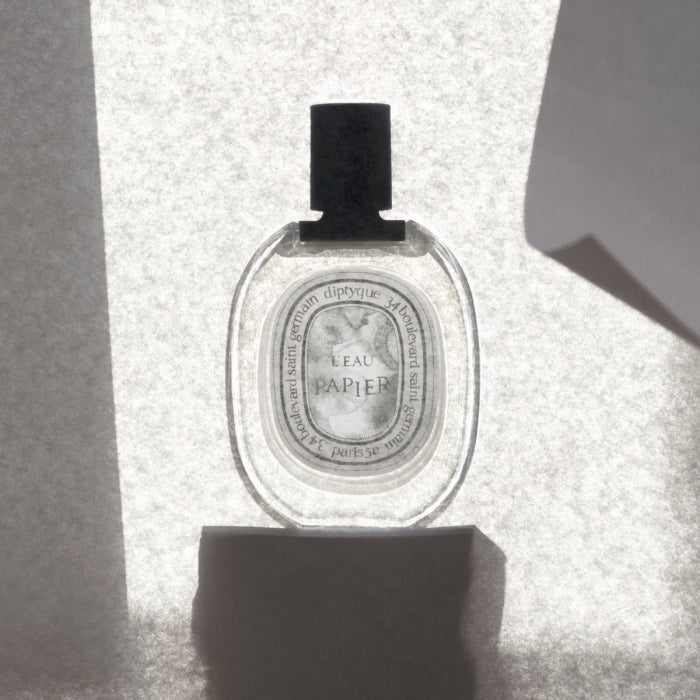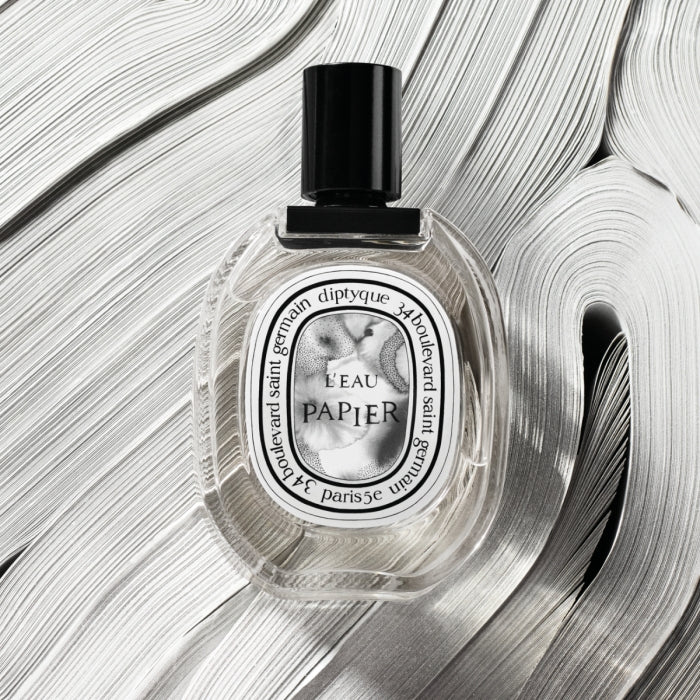This composition is the result of the vision and imagination of perfumer Fabrice Pellegrin.
‘Creating a fragrance for Diptyque is like writing a book. You need a story, an introduction, a structure and raw materials that complement each other and weave together to form a narrative. For L'Eau Papier, I started with one main ingredient: grain, specifically sesame and an extract from its roasted seeds. This note is the surprising element of the perfume, which I used to evoke the smell of ink and add a refined, indulgent nuance. I then refined the composition with musk notes to give it more sensuality. To round it off, I added floral notes of mimosa, whose delicate powdery qualities emphasise the soft note representing paper. The fragrance is defined by the uniqueness of the grain and ink accord combined with the sweet scent of white musk, which represents the smell of paper. I translated the delicate and sensitive contact of the ink with the sheet of paper by adding an overdose of musk.’
Just as ink penetrates different sheets of paper in different ways, L'Eau Papier will produce different results from one skin to another and over time, thanks to the way the white musk develops and unfolds. L'Eau Papier is a perfect symbol of paper – and a way for every personality to express its unique individuality.
White musk
It all starts with a white sheet of paper. Then ink and ideas come into play. Imagination and the senses determine the lines, dreams and experiences shape the forms. This is how things have always begun – for artists from all over the world, as well as for Desmond Knox-Leet, Christiane Montadre-Gautrot and Yves Coueslant, the three multidisciplinary creators and founders of Diptyque, who share a love of beauty, art and expressive drawings.
Unique to the house is that the discovery of the fragrances first takes place through the eyes and the graphic expression that tells the story and composition of the perfumes. A white sheet of paper and a black line form the beginning of the creative gesture, creating the connection between the nose and the hand. The visual, the scent and the image come together in a unique process of fragrance creation, a true synesthetic experience.
Rice steam accord
This was also the natural process behind the creation of L'Eau Papier, Diptyque's eau de toilette, conceived in collaboration with perfumer Fabrice Pellegrin and artist Alix Waline. With its history, characteristics and name, L'Eau Papier is a true homage to creation, the heart of the house, and to paper, the most important medium through which this creation is expressed. Paper as a source of inspiration for ideas, as an essential basis for the creation of drawings and fragrances, which in turn stimulate the imagination of each individual by telling stories and evoking memories. The name of this new creation not only brings water and paper together, but also recalls the history of the house and the passion of the founding trio for lines and brushstrokes. The name alludes to the ink diluted with water that gives form to the image on the page, and to the gesture of the artist composing his drawing and giving free rein to his imagination.
French artist Alix Waline, who trained at the École des Beaux-Arts in Paris and the École de la Cambre in Brussels, has created a work in delicate black and white, entirely in her own style, in which she multiplies shadows and textures and builds up the drawing point by point and layer by layer. In contrast to the traditional illustrations of Diptyque perfumes, there are no recognisable figures or landscapes, but rather an impressionistic and abstract black-and-white composition.
On the front, the changing colour intensity of the motifs and strokes illustrates the many possibilities of putting art on paper and reveals a wealth of different nuances and emotions. Everyone is free to interpret the drawing in their own way and imagine their own story. More than ever before, the viewer's eye determines the work, guided by their own imagination.
L'Eau Papier – Mimosa and a light wood accord
Alix Waline's drawing on the back reflects her vision of the fragrance and its characteristics, reminiscent of the pointillist style of Desmond and Yves, which has shaped the identity and character of Diptyque's illustrations. A washed-out ink underscores the softness and material properties of the paper grain and white musk. A multitude of small, closely spaced strokes symbolise the rice steam accord, which is as delicate as the fine rice paper on which the drawing was applied. The series of fine grooves represents the woody accord – wood is both a symbol of durability and the raw material for paper. Delicate brushstrokes with diluted ink embody the lively note of mimosa, which adds a subtle hint of sweetness.

